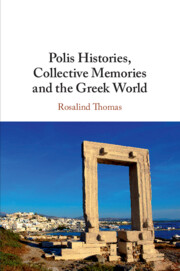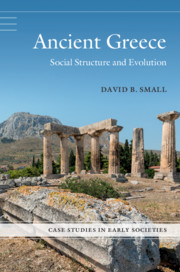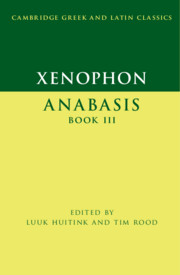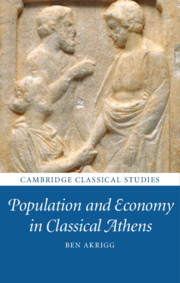Refine search
Actions for selected content:
23990 results in Ancient history
Contributors
-
- Book:
- More Sayings of the Desert Fathers
- Print publication:
- 28 March 2019, pp viii-ix
-
- Chapter
- Export citation

Polis Histories, Collective Memories and the Greek World
-
- Published online:
- 26 March 2019
- Print publication:
- 11 April 2019

Ancient Greece
- Social Structure and Evolution
-
- Published online:
- 25 March 2019
- Print publication:
- 30 May 2019

Xenophon: Anabasis Book III
-
- Published online:
- 23 March 2019
- Print publication:
- 21 March 2019
-
- Textbook
- Export citation
List of Maps and Figures
-
- Book:
- Xenophon: <I>Anabasis</I> Book III
- Published online:
- 23 March 2019
- Print publication:
- 21 March 2019, pp viii-viii
-
- Chapter
- Export citation
Preface
-
- Book:
- Xenophon: <I>Anabasis</I> Book III
- Published online:
- 23 March 2019
- Print publication:
- 21 March 2019, pp ix-x
-
- Chapter
- Export citation
Frontmatter
-
- Book:
- Xenophon: <I>Anabasis</I> Book III
- Published online:
- 23 March 2019
- Print publication:
- 21 March 2019, pp i-vi
-
- Chapter
- Export citation
Index
-
- Book:
- Xenophon: <I>Anabasis</I> Book III
- Published online:
- 23 March 2019
- Print publication:
- 21 March 2019, pp 208-220
-
- Chapter
- Export citation
Commentary
-
- Book:
- Xenophon: <I>Anabasis</I> Book III
- Published online:
- 23 March 2019
- Print publication:
- 21 March 2019, pp 69-192
-
- Chapter
- Export citation
List of Abbreviations
-
- Book:
- Xenophon: <I>Anabasis</I> Book III
- Published online:
- 23 March 2019
- Print publication:
- 21 March 2019, pp xi-xiii
-
- Chapter
- Export citation
Introduction
-
- Book:
- Xenophon: <I>Anabasis</I> Book III
- Published online:
- 23 March 2019
- Print publication:
- 21 March 2019, pp 1-44
-
- Chapter
- Export citation
Contents
-
- Book:
- Xenophon: <I>Anabasis</I> Book III
- Published online:
- 23 March 2019
- Print publication:
- 21 March 2019, pp vii-vii
-
- Chapter
- Export citation
Bibliography
-
- Book:
- Xenophon: <I>Anabasis</I> Book III
- Published online:
- 23 March 2019
- Print publication:
- 21 March 2019, pp 193-207
-
- Chapter
- Export citation
List of Maps and Figures
-
- Book:
- Xenophon: <I>Anabasis</I> Book III
- Published online:
- 23 March 2019
- Print publication:
- 21 March 2019, pp xiv-xvi
-
- Chapter
- Export citation
Title match
ΞΕΝΟΦωΝΤΟΣ ΚΥΡΟΥ ΑΝΑΒΑΣΕωΣ ΛΟΓΟΣ ΤΡΙΤΟΣ
-
- Book:
- Xenophon: <I>Anabasis</I> Book III
- Published online:
- 23 March 2019
- Print publication:
- 21 March 2019, pp 45-68
-
- Chapter
- Export citation

Population and Economy in Classical Athens
-
- Published online:
- 08 March 2019
- Print publication:
- 28 March 2019
Index
-
- Book:
- The Ghost of Namamugi
- Published by:
- Amsterdam University Press
- Published online:
- 30 April 2022
- Print publication:
- 28 February 2019, pp 241-246
-
- Chapter
- Export citation
Introduction
-
- Book:
- The Ghost of Namamugi
- Published by:
- Amsterdam University Press
- Published online:
- 30 April 2022
- Print publication:
- 28 February 2019, pp 3-10
-
- Chapter
- Export citation
4 - Namamugi Remembered
-
- Book:
- The Ghost of Namamugi
- Published by:
- Amsterdam University Press
- Published online:
- 30 April 2022
- Print publication:
- 28 February 2019, pp 89-116
-
- Chapter
- Export citation
List of Illustrations
-
- Book:
- The Ghost of Namamugi
- Published by:
- Amsterdam University Press
- Published online:
- 30 April 2022
- Print publication:
- 28 February 2019, pp ix-x
-
- Chapter
- Export citation
